Zen-the-wizard - Cottagecore Is Racist, Just Say Farmcore

More Posts from Zen-the-wizard and Others




Homemaking, gardening, and self-sufficiency resources that won’t radicalize you into a hate group
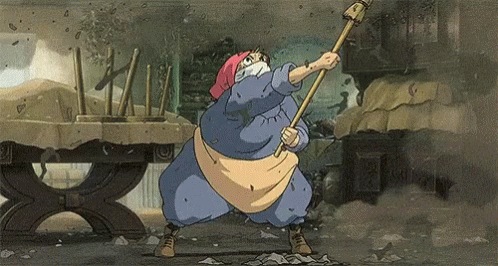
It seems like self-sufficiency and homemaking skills are blowing up right now. With the COVID-19 pandemic and the current economic crisis, a lot of folks, especially young people, are looking to develop skills that will help them be a little bit less dependent on our consumerist economy. And I think that’s generally a good thing. I think more of us should know how to cook a meal from scratch, grow our own vegetables, and mend our own clothes. Those are good skills to have.
Unfortunately, these “self-sufficiency” skills are often used as a recruiting tactic by white supremacists, TERFs, and other hate groups. They become a way to reconnect to or relive the “good old days,” a romanticized (false) past before modern society and civil rights. And for a lot of people, these skills are inseparably connected to their politics and may even be used as a tool to indoctrinate new people.
In the spirit of building safe communities, here’s a complete list of the safe resources I’ve found for learning homemaking, gardening, and related skills. Safe for me means queer- and trans-friendly, inclusive of different races and cultures, does not contain Christian preaching, and does not contain white supremacist or TERF dog whistles.
Homemaking/Housekeeping/Caring for your home:
Making It by Kelly Coyne and Erik Knutzen [book] (The big crunchy household DIY book; includes every level of self-sufficiency from making your own toothpaste and laundry soap to setting up raised beds to butchering a chicken. Authors are explicitly left-leaning.)
Safe and Sound: A Renter-Friendly Guide to Home Repair by Mercury Stardust [book] (A guide to simple home repair tasks, written with rentals in mind; very compassionate and accessible language.)
How To Keep House While Drowning by KC Davis [book] (The book about cleaning and housework for people who get overwhelmed by cleaning and housework, based on the premise that messiness is not a moral failing; disability and neurodivergence friendly; genuinely changed how I approach cleaning tasks.)
Gardening
Rebel Gardening by Alessandro Vitale [book] (Really great introduction to urban gardening; explicitly discusses renter-friendly garden designs in small spaces; lots of DIY solutions using recycled materials; note that the author lives in England, so check if plants are invasive in your area before putting them in the ground.)
Country/Rural Living:
Woodsqueer by Gretchen Legler [book] (Memoir of a lesbian who lives and works on a rural farm in Maine with her wife; does a good job of showing what it’s like to be queer in a rural space; CW for mentions of domestic violence, infidelity/cheating, and internalized homophobia)
“Debunking the Off-Grid Fantasy” by Maggie Mae Fish [video essay] (Deconstructs the off-grid lifestyle and the myth of self-reliance)
Sewing/Mending:
Annika Victoria [YouTube channel] (No longer active, but their videos are still a great resource for anyone learning to sew; check out the beginner project playlist to start. This is where I learned a lot of what I know about sewing.)
Make, Sew, and Mend by Bernadette Banner [book] (A very thorough written introduction to hand-sewing, written by a clothing historian; lots of fun garment history facts; explicitly inclusive of BIPOC, queer, and trans sewists.)
Sustainability/Land Stewardship
Braiding Sweetgrass by Robin Wall Kimmerer [book] (Most of you have probably already read this one or had it recommended to you, but it really is that good; excellent example of how traditional animist beliefs – in this case, indigenous American beliefs – can exist in healthy symbiosis with science; more philosophy than how-to, but a great foundational resource.)
Wild Witchcraft by Rebecca Beyer [book] (This one is for my fellow witches; one of my favorite witchcraft books, and an excellent example of a place-based practice deeply rooted in the land.)
Avoiding the “Crunchy to Alt Right Pipeline”
Note: the “crunchy to alt-right pipeline” is a term used to describe how white supremacists and other far right groups use “crunchy” spaces (i.e., spaces dedicated to farming, homemaking, alternative medicine, simple living/slow living, etc.) to recruit and indoctrinate people into their movements. Knowing how this recruitment works can help you recognize it when you do encounter it and avoid being influenced by it.
“The Crunchy-to-Alt-Right Pipeline” by Kathleen Belew [magazine article] (Good, short introduction to this issue and its history.)
Sisters in Hate by Seyward Darby (I feel like I need to give a content warning: this book contains explicit descriptions of racism, white supremacy, and Neo Nazis, and it’s a very difficult read, but it really is a great, in-depth breakdown of the role women play in the alt-right; also explicitly addresses the crunchy to alt-right pipeline.)
These are just the resources I’ve personally found helpful, so if anyone else has any they want to add, please, please do!

as someone who is a HUGE daydreamer and often builds up a whole world of expectations when i make plans, i made this spread for myself, and it’s proven to be incredibly useful. hopefully it’s of use to some of you as well!
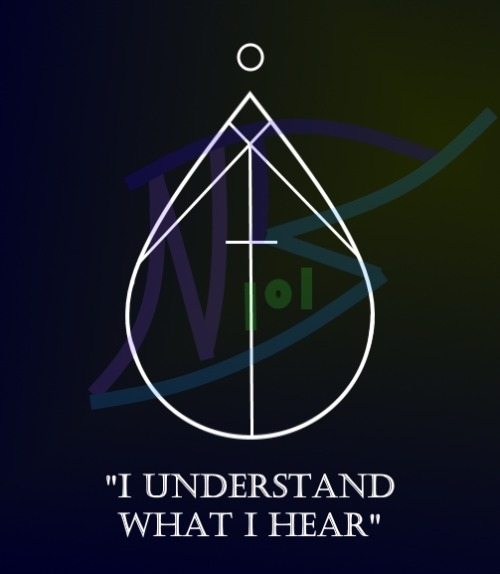
“I Understand What I Hear”
Personally, I’m a big fan of the idea to get this tattood tight under the earlobe, but that’s not exactly the most accessible method of use.
Draw this on a band-aid and place it behind or somewhere around your ear(s)

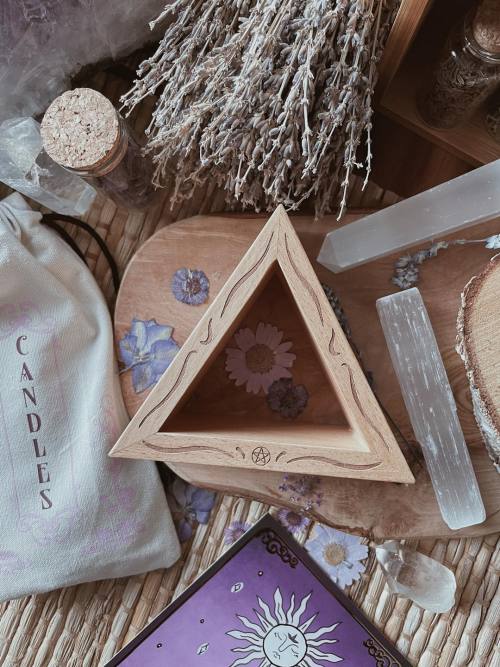
🔮🤍🌿✨
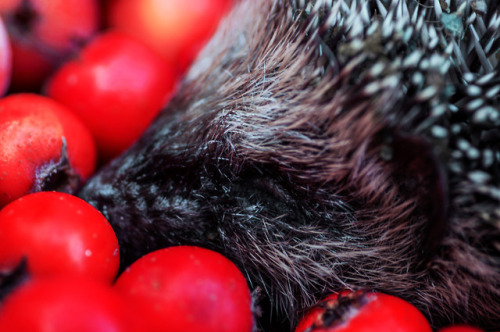




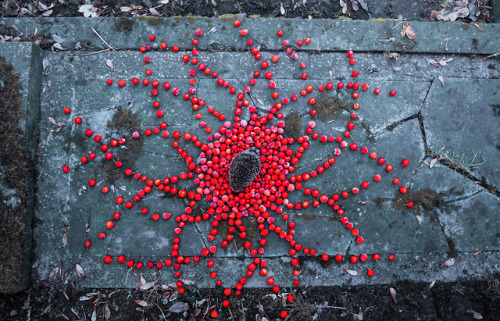
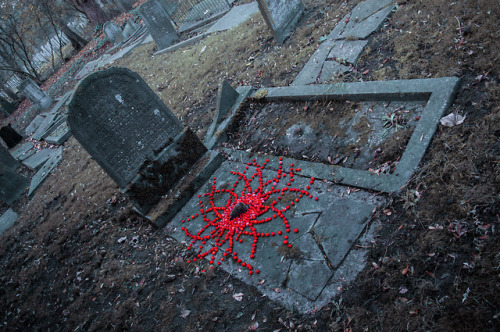
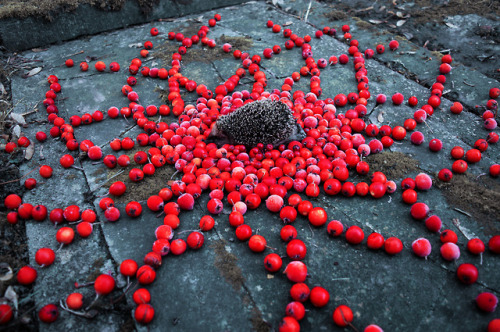
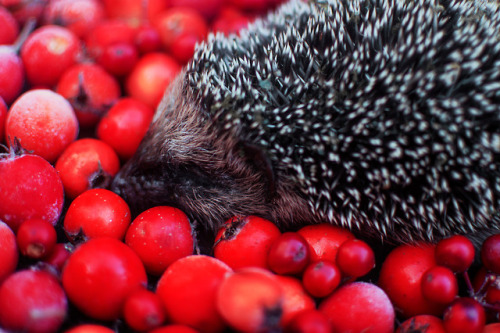

“The Womb”
I noticed a few spikes were sticking out of the pond with duckweed and I wondered what it was. It turned out to be a young little hedgehog that drowned… Such a horrible and scary death for this small creature.
I went to the old cemetery, as this place is so beautiful and special to me to make berry mandala for it, to symbolize its return to Nature’s womb.
Disclaimer: These photos are taken at an old local cemetary where you are allowed to walk on and between the graves. This is a special place to me and placing the animal in that location doesn’t feel disrespectful to me, nor is that my intention.

"This Grove Is Safe"
I recommend burning this sigil to ash, mixing it with more ashes, and then letting the wind carry the ashes across the grove.
The Great Handfasting Project: Secular Wedding Planning Books

While historical sources about pre-Christian weddings and books written by modern pagans can give you a lot of good ideas for your ceremony, many of them don't cover the most stressful part of getting married: planning, budgeting, scheduling, and managing a modern wedding.
My fiance and I decided in December to move our wedding date up from August of 2024 to August of 2023 -- cutting our planning time from nineteen months to just over seven months. This meant we had a lot less time than intended to make a guest list, make a budget, book a venue, send out invitations, buy our outfits, arrange catering for the reception, and all the other things you have to do to make a wedding happen. It also meant that our timeline was a little more rushed than we'd originally intended.
Because our timeline had suddenly shrunk, we decided to prioritize planning the reception first, then start writing a script for our ceremony after we'd nailed down reception details. We did this because we knew our reception was going to have more than three times as many guests as our ceremony and would be what we spent most of our budget on. Our reception is also going to be 100% secular out of consideration for guests who may not be comfortable attending a pagan ceremony but who still want to support us.
I cope with new and stressful situations by reading about them. Research is the balm that soothes my worries and the foundation that lets me build my own kickass plans. When we decided to move up our wedding date, I immediately went out and bought a couple of books to help me navigate the many big and small decisions I'd have to make in the coming months.

The Everything Guide to Micro Weddings by Katie Martin
When I first started looking into planning my own wedding, I quickly learned that what my fiance and I wanted to do is called a "micro wedding." According to Katie Martin, a micro wedding is any wedding or commitment ceremony with fewer than 50 guests. I feel like most pagan weddings end up falling into this category. (Something about pagans makes us prefer small, intimate gatherings, I guess?)
Pros
Katie Martin is actually a professional wedding planner, so this book very much comes across as expert advice from an industry professional.
There's lots of good, practical advice about logistics, which is exactly what I wanted. This book taught me how to make a wedding planning spreadsheet, and I love that.
I like that the author includes advice for dealing with family members' expectations for your wedding day, especially when they would have liked to see you do things differently. I think a lot of this advice is relevant to pagans whose family doesn't understand why they want a handfasting, or anyone else who has to gently break it to their grandmother that they aren't having a church wedding. I felt like these sections did help prepare me to defend our decision to do a small, casual wedding and my decision not to have my biological father present even though several of my siblings are still close to him.
This book is LGBTQ+ inclusive!
I also love that the author gives practical advice for interfaith and multicultural weddings, including alternatives for when one or both religions doesn't allow interfaith ceremonies.
I like that the author addresses guest dietary needs in the sections on planning the menu. For example, she recommends asking guests about food allergies before finalizing the menu, making sure to have vegan/vegetarian options, and offering non-alcoholic drinks for toasts. As a vegetarian with Celiac Disease, I appreciate this and can testify that it's unfortunately not something every wedding planner thinks about.
This book was written after the pandemic and includes tips and ideas for celebrating during quarantine, which is really helpful.
The appendix has literal checklists you can use to plan different parts of your wedding.
Cons
Katie Martin is a professional wedding planner who specializes in destination weddings, and it shows. She discusses destination weddings a lot in this book. Maybe it's just because I'm not planning a destination wedding, but I felt like that topic could have been its own book instead of being lumped into this one.
The "environmentalist" politics of this book are inconsistent. At one point, Martin says that one of the main draws of micro weddings is that they have a smaller carbon footprint than bigger weddings, which I'm sure is true. But just a few chapters later, she gives a list of potential locations for destination weddings that includes Hawaii and other places where both the environment and Native people are seriously harmed by tourism. This is a very minor gripe, but it annoyed me and felt a little bit like greenwashing.
I wish Martin gave price estimates for the things she suggests. I understand that she probably didn't want to date her book by including exact numbers, but a rough estimate would have been helpful. There are almost no numbers given, and when the author says that Option X is cheaper than Option Y, she doesn't say how much cheaper it is. This makes it hard to think about budgeting while reading.
It really rubbed me the wrong way that this author subscribes to the outdated etiquette of referring to married women as "Mrs. [husband's name]" in invitations and programs. Martin even says divorced women should be addressed as "Mrs. [ex-husband's name]" if they haven't remarried! This is based on the incredibly patriarchal idea that women's identities are defined by their husbands, and if I received a wedding invite that addressed me this way, I wouldn't go. There are also no alternatives given for addressing same-gender couples. This just feels like an incredibly old-fashioned and misogynist inclusion in a book that is otherwise very modern.
Overall rating: 4/5 stars
Would I recommend it? Yes, especially if you're doing most of the planning for your wedding yourself.

Offbeat Bride by Ariel Meadow Stallings
When my fiance and I first decided to (literally) tie the knot, Offbeat Wed (formerly Offbeat Bride) was an incredibly helpful source of inspiration. It was the first time I'd ever seen photos of polyamorous weddings, which I immediately sent to all of my partners with lots of hearts and crying emojis. It's also a goldmine of inspiration for queer weddings, nonbinary/genderqueer weddings, disabled weddings, and so much more. So when I learned that the site's founder had written a wedding planning book, I knew it would be an invaluable resource.
(Note: This book has been revised twice since it was originally published. The version I read is the third edition, which is the most recent version.)
Pros
This book addresses things I've never seen talked about in other wedding planning resources, like the conflict of hating the beauty industrial complex for making money off insecurities they created vs. wanting to look nice for your wedding photos. (Because even if you don't hire a photographer, someone is gonna take photos.) I loved this book's "do what you gotta do" approach and the emphasis on feeling comfortable and beautiful on your special day.
I cannot stress enough how much I appreciate the section titled "A Big-Bride Survival Guide." As a fat girl, lemme tell you: as stressful as shopping for wedding outfits already is, it's more stressful with a bigger body. And don't even get me started on the subtle (and not-so-subtle) weight loss comments from relatives. I loved that this book includes practical advice for how to navigate the entire process as a fat bride (or groom, or spouse).
This is by far the most LGBTQ+ affirming wedding planning book I've read so far. There's an entire chapter dedicated to queer weddings, but advice for queering your wedding is sprinkled throughout the rest of the book as well. "Queer wedding" also isn't only defined as two men or two women getting married. There's advice for bisexual and pansexual weddings (and the author identifies as bisexual!), asexual weddings, transgender weddings, and nonbinary/genderqueer weddings. There's even a short but sweet section on polyamorous commitment ceremonies, both for groups of more than two people who are "getting weddinged" and for polyamorous couples who may not be out to all their guests but still want to find subtle ways to include their other partners. I also really liked that the author acknowledges the struggles and hardships faced by queer couples (and throuples and more) and the importance of celebrating queer community, resilience, and chosen-family.
I really appreciate the warning about the pitfalls of wedding planning apps, magazines, and social media. The author warns readers about the risk of having so much inspiration you fall into the hole of choice paralysis or keep redoing things you already finished. She also warns about the temptation to compare your wedding to someone else's. I loved this gentle reminder to be mindful in how we engage with the wedding planning industry. Here's a wonderful direct quote: "Remember, the wedding tech is here to serve you. You are not here to serve it."
There's an entire chapter on disabilities and accessibility! I really appreciated this inclusion, and I found the advice genuinely helpful as I plan a wedding that accommodates my own chronic illnesses, my fiance's and my ADHD, several guests with mobility issues, and other guests with various other health conditions and invisible disabilities.
I loved the chapter on self-care and navigating wedding planning anxiety. Planning any big event, but especially one as legally, ideologically, and culturally loaded as a wedding, is really stressful, even if you're doing a small celebration with just close friends and family. I appreciated the acknowledgement that feeling stressed or anxious is both normal and common, and I loved that the author talked about the ways this stress can affect your physical body as well.
Overall, this is a really great book with excellent advice, and it really does cover every single aspect of wedding planning.
Cons
It's actually really hard for me to think of stuff I dislike about this book, if I'm being honest. There were a few typos, but nothing atrocious.
This book is written from the bride's perspective. The author includes lots of stories about her own wedding, and she is a woman who married a man, which definitely shaped her experience. Like I mentioned, there's a lot of good advice here for grooms and other-gendered people having weddings, and there's a lot of advice and suggestions for queer weddings. But if it's important to you to read a book about someone's firsthand experience of having a same-gender wedding, or of being a transgender bride/groom, or of navigating the wedding industry when you don't identify with a binary gender, this book isn't that.
Overall rating: 5/5 stars
Would I recommend it? Yes!!! Especially if you're having a "nontraditional" wedding.

Urban.Folkwitch
-
 dazedhazebabe liked this · 3 months ago
dazedhazebabe liked this · 3 months ago -
 in5pite liked this · 5 months ago
in5pite liked this · 5 months ago -
 amongthefallingstar reblogged this · 1 year ago
amongthefallingstar reblogged this · 1 year ago -
 amongthefallingstar liked this · 1 year ago
amongthefallingstar liked this · 1 year ago -
 efectivsuperba reblogged this · 1 year ago
efectivsuperba reblogged this · 1 year ago -
 efectivsuperba liked this · 1 year ago
efectivsuperba liked this · 1 year ago -
 mr-arcturus liked this · 1 year ago
mr-arcturus liked this · 1 year ago -
 naughtypiggy reblogged this · 1 year ago
naughtypiggy reblogged this · 1 year ago -
 naughtypiggy liked this · 1 year ago
naughtypiggy liked this · 1 year ago -
 pankioman reblogged this · 1 year ago
pankioman reblogged this · 1 year ago -
 pankioman liked this · 1 year ago
pankioman liked this · 1 year ago -
 littlebayking reblogged this · 1 year ago
littlebayking reblogged this · 1 year ago -
 coffeeovercoke reblogged this · 1 year ago
coffeeovercoke reblogged this · 1 year ago -
 ginsengana reblogged this · 1 year ago
ginsengana reblogged this · 1 year ago -
 goodvalkz liked this · 1 year ago
goodvalkz liked this · 1 year ago -
 coeur-briseee liked this · 1 year ago
coeur-briseee liked this · 1 year ago -
 altnahue reblogged this · 1 year ago
altnahue reblogged this · 1 year ago -
 heisenburgerss liked this · 1 year ago
heisenburgerss liked this · 1 year ago -
 greciaicerg liked this · 1 year ago
greciaicerg liked this · 1 year ago -
 regal-fish liked this · 1 year ago
regal-fish liked this · 1 year ago -
 isontrealltknow liked this · 1 year ago
isontrealltknow liked this · 1 year ago -
 myocusringti liked this · 1 year ago
myocusringti liked this · 1 year ago -
 tru-cu-tu liked this · 1 year ago
tru-cu-tu liked this · 1 year ago -
 vitamin-bcomplex reblogged this · 1 year ago
vitamin-bcomplex reblogged this · 1 year ago -
 dreamineuphoria liked this · 1 year ago
dreamineuphoria liked this · 1 year ago -
 screamingwombatgirl reblogged this · 2 years ago
screamingwombatgirl reblogged this · 2 years ago -
 screamingwombatgirl liked this · 2 years ago
screamingwombatgirl liked this · 2 years ago -
 vitamin-bcomplex reblogged this · 2 years ago
vitamin-bcomplex reblogged this · 2 years ago -
 gabessocks reblogged this · 2 years ago
gabessocks reblogged this · 2 years ago -
 jupiteriansiren reblogged this · 2 years ago
jupiteriansiren reblogged this · 2 years ago -
 snikwahd liked this · 2 years ago
snikwahd liked this · 2 years ago -
 black-rosewolf66 reblogged this · 2 years ago
black-rosewolf66 reblogged this · 2 years ago -
 black-rosewolf66 liked this · 2 years ago
black-rosewolf66 liked this · 2 years ago -
 shark-story liked this · 2 years ago
shark-story liked this · 2 years ago -
 laccariaamethystina reblogged this · 2 years ago
laccariaamethystina reblogged this · 2 years ago -
 quietmage reblogged this · 2 years ago
quietmage reblogged this · 2 years ago -
 socului reblogged this · 2 years ago
socului reblogged this · 2 years ago -
 depressed-twin liked this · 2 years ago
depressed-twin liked this · 2 years ago -
 the-girl-with-the-cat-tattoo reblogged this · 2 years ago
the-girl-with-the-cat-tattoo reblogged this · 2 years ago -
 the-girl-with-the-cat-tattoo liked this · 2 years ago
the-girl-with-the-cat-tattoo liked this · 2 years ago

Call me clover or zen 🍀 Head of a near abandoned coven🍀Im not wiccan🍀 He/She/Ey 🍀 23 yrs old 🍀 two spirit and Genderfluid🍀 butch bisexual 🍀 Alloaro 🍀 my main devotion is to hera but i also work with Artemis, hermes, and many others 🍀 Zeus stans can die off thx 🍀 sigil/pendulum/card readings: open 🍀 somewhat of a sigil blog somewhat of a general witchy blog 🍀 Hellenistic/ astrological/polytheistic/native-religious wizard, druid, witchdoctor and tribal healer 🍀 Inuit/metis/Cherokee mixed, not raised in culture and trying to reconnect to those roots as well as focus on my practice more🍀 i do not follow the 3 folds law, i support curse usage, you cant fuck and have a relationship with a god, you have no right to tell me how to practice, my magic is vaild without peer review, paganism dosent have dogma, i will always support patron gods/goddesses, Persephone was raped by hades so stop acting like their beauty and the beast and fuck off if you villianize the goddesses who are mothers, ur sus. No full religion is culturally exclusive, only certain practices and certain titles are. Cryptid worship is vaild🍀 always supporting jewish and muslim witches 🍀 dni: racist, terf/transphobe/nbphobe/, tru/med, proship, anti-choice, fascist
254 posts